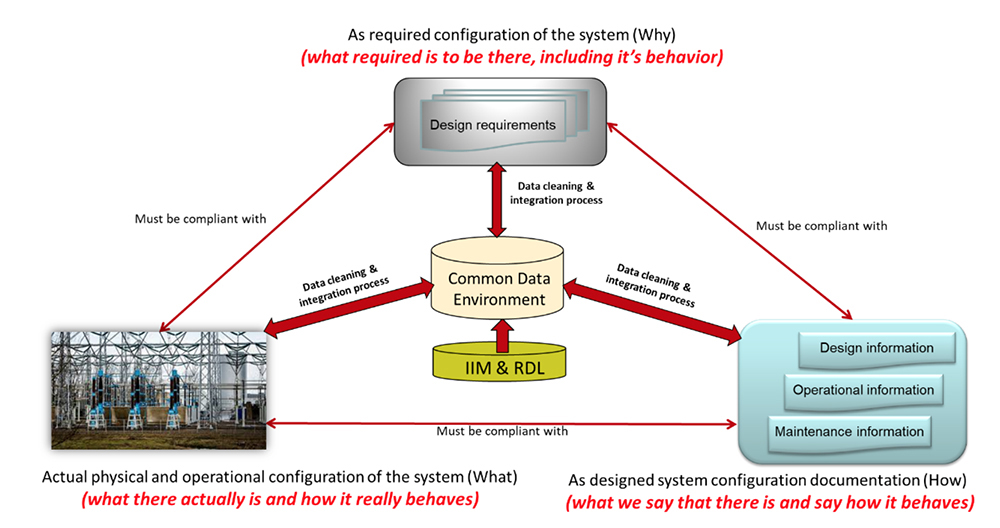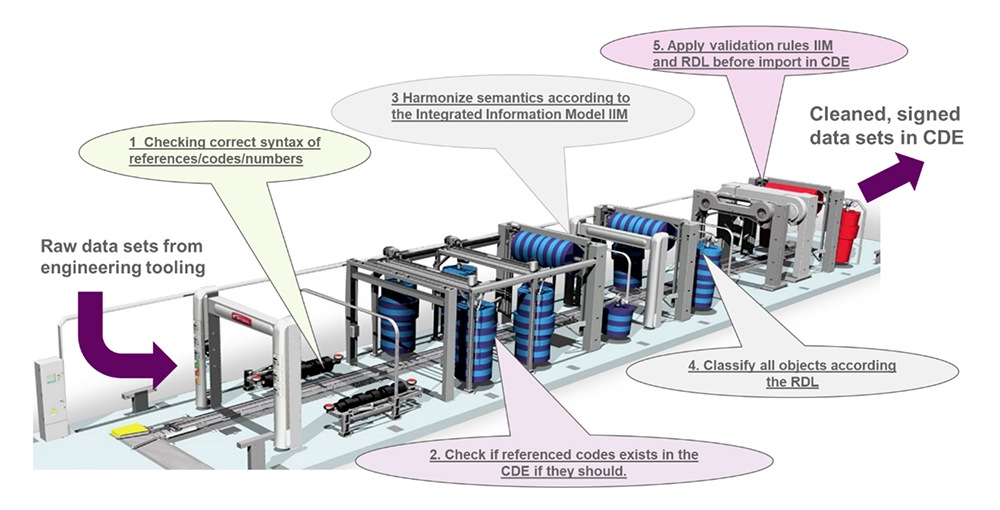In the Netherlands, the Pallas organization is preparing the replacement of the ageing High Flux Reactor (HFR), producing medical isotopes which are supplied European wide. This paper presents a pragmatic and proven implementation of IM and CM in the Pallas nuclear facility project that elegantly meets the needs of IM and CM with respect to the equilibrium triangle specified by the International Atomic Energy Agency (IAEA). This triangle in fact represents the Why, How and What of a nuclear facility and their mutual relations which ought to be always traceable. In practice these mutual relations are blocked by interoperability barriers that mostly have an organizational, technological, and semantic nature.

As one of the key points, Pallas has opted for linked data, semantic modelling, and graph database technology to realize a Common Data Environment (CDE). In this CDE all data obtained from the fragmented software tool set used over the life cycle of the facility is classified, harmonized, signed, and integrated. Based on international standards like ISO 15926 a knowledge-centric facility integrated information model (IIM) was developed and leveraged as a modern and efficient approach to better support, manage and enable seamless sharing, transfer, and use of sustainable design knowledge and information within and across all facility life cycle phases.
The CDE is organized by means of a set of related data structures (e.g. System-, Work- and Geographical Breakdown Structures) seamlessly merging the data obtained from the engineering environment. Essential in the CDE approach as applied in the Pallas project is the cleaning process of data obtained from the landscape of software tools which require thoroughly “washing” of the data exported by the various software tools. The cleaning process corrects syntax errors and harmonizes and classifies all data in accordance with the IIM and RDL and assures integrity.
For this a novel workflow was developed to clean all data obtained from the engineering tools including 2D and 3D modelling software. This data-cleaning process, which is like a “car-wash for data”, is an essential part of the integral concept to arrive at a sound CDE which only contains data of high quality. This project has adopted fully linked data and semantic modelling technology based on W3C standards. This because of the semantic richness of the whole CDE which would become unmanageable in case of a relational database approach.

From a viewpoint of simplicity, the choice has been made to only make use of only RDFS published by W3C. This best practice has shown that extending RDFS with OWL would complicates the whole significantly which currently does not outweigh the alleged benefits whereby there is also no off-the-shelf software available that supports the use of OWL. The “carwash for data” requires anyhow new project roles filled in by people with domain knowledge of engineering and nuclear facilities and IT and semantic modelling skills as well.
By integrating CDE data with operational data and merging this with advanced videogame technology (like developed and implemented by Dynatec’s Talent Swarm) nuclear facilities can be managed using immersive, real-time simulators.




